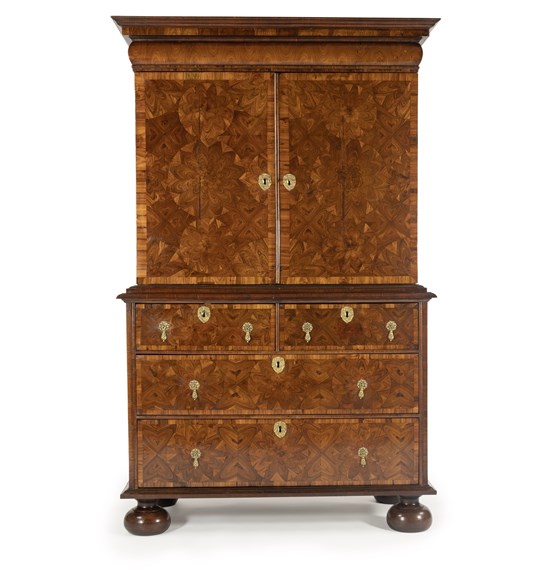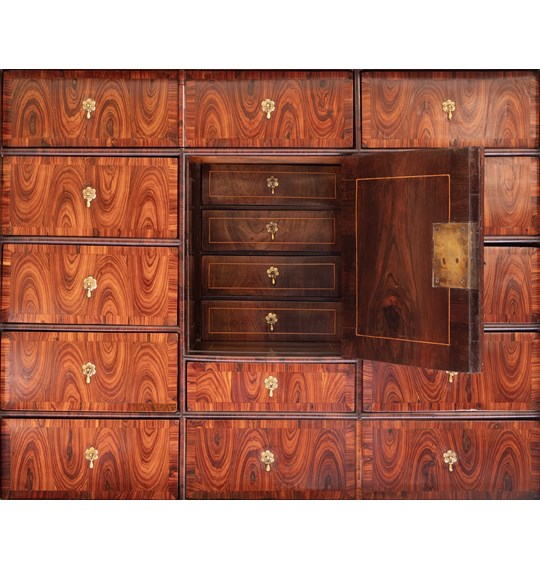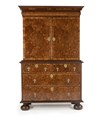description
The piece has oyster veneered parquetry roundels and interspersed hearts throughout. Most of the cabinets of this period are in walnut, this piece is in the most expensive wood of this era, kingwood, and not only the front but also the sides and the interior which makes it a trully rare piece of furniture. The reason of kingwood being so expensive is that it is more a bush than a tree and therefor only available in small amounts. It is cut across the branch and in this way you can form that oyster pattern, so called because it looks like the inside of an oyster. All this means that this piece must have been made for a member of the Royal Family or someone of the top courtiers to the Royal Family. It belongs to a small family of pieces made by Thomas Pistor, the second one of which I was able to acquire. A scriptor of this series is described by the famous furniture historian Adam Bowett in his book English Furniture 1660-1714 From Charles II to Queen Anne p209. Thomas Pistor is also mentioned in The dictionary of English furniture makers and in The furniture history society journal of 2000.
To the piece itself, the top has a shaped and carvetto moulding leading to a convex frieze with weavy oyster veneered pattern. The upper part of this piece of furniture has two doors, inlaid with parquetry roundels and interspersed hearts. These cabinet doors open to reveal an arrangement of eleven oyster veneered drawers around a central door which opens to reveal four further rosewood inlaid drawers.
The lower part of the chest is fitted with two half width and two full width inlaid drawers. The whole is raised on bun feet.
To the piece itself, the top has a shaped and carvetto moulding leading to a convex frieze with weavy oyster veneered pattern. The upper part of this piece of furniture has two doors, inlaid with parquetry roundels and interspersed hearts. These cabinet doors open to reveal an arrangement of eleven oyster veneered drawers around a central door which opens to reveal four further rosewood inlaid drawers.
The lower part of the chest is fitted with two half width and two full width inlaid drawers. The whole is raised on bun feet.
A William and Mary oyster veneered Kingwood cabinet on chest
Contact
De Cock Antiques
Herzele




